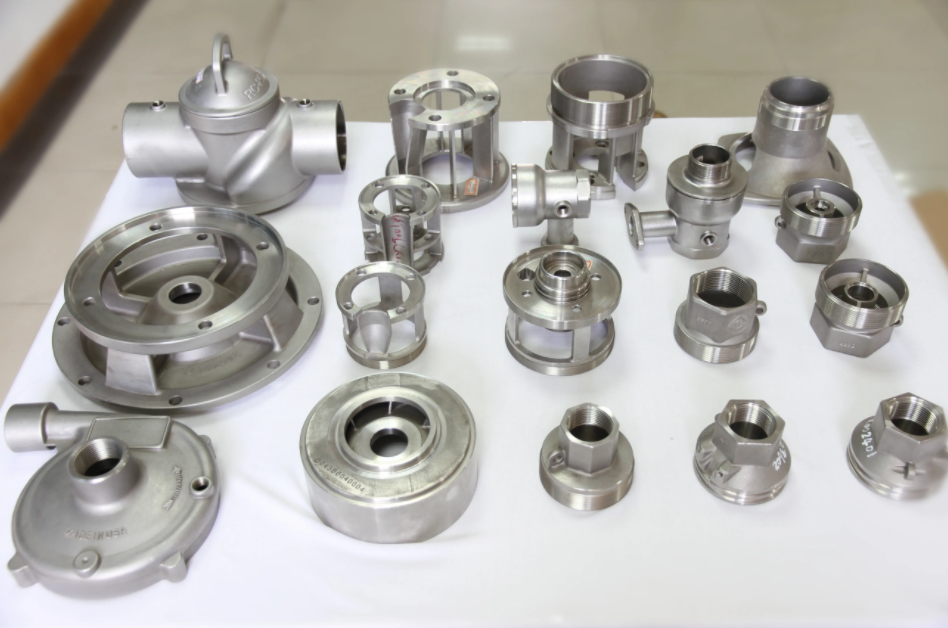Investment casting tools: Wax injection molds for creating wax patterns
Tools in metal casting and CNC machining refer to reusable items specific to each job. In investment casting, a mold is considered a wax injection mold used to create a wax pattern. If you are familiar with how investment casting works, you know that these wax patterns form the basis of the investment casting process. Every part starts with a wax pattern, and the properties of wax—smooth surface, low melting temperature, and excellent flow—make highly complex investment castings possible.
For an overview of how investment casting works, including a step-by-step guide to the process of creating a wax pattern, check out our free ebook, The Investment Casting Guide.
Investment casting mold design
In many cases, the customer is responsible for the casting design. A good foundry facility will work with customers to ensure designs are optimized for design for manufacturability and pass a rigorous Advanced Planning Quality Process (APQP). By following rigorous guidelines based on decades of experience, foundries can recommend design changes to improve product quality and functionality, while increasing manufacturing efficiency and reducing costs.
Once the customer and supplier have finalized and agreed upon the design, the foundry will work directly with the tool maker to design the tool. These toolmakers are essentially specialized CNC machining equipment. They use CNC milling machines, lathes, electrical discharge machining (EDM) to produce wax patterns, and finish tools by hand polishing or filing.
Foundries work directly with toolmakers to ensure optimized materials, dimensions and critical surfaces. The mold also remains in the foundry during production, but in most cases it actually belongs to the foundry customer. Wax-injected molds are assets that can be easily transferred between foundries if desired.
Typical materials for investment casting molds
Wax injection molds for investment casting are usually made of aluminum. The properties of aluminum make it an ideal material for investment casting. First, its thermal properties allow heat to dissipate quickly, helping to reduce cycle times during wax injection. Aluminum is also less dense than other alloys, so aluminum molds are lighter and easier to handle and transport. In addition, aluminum is a highly machinable material, so the tooling cost to produce aluminum molds is relatively low. Aluminum is also readily available, so toolmakers and machine shops can obtain aluminum inventories with minimal cost and effort.
Since the investment wax is non-abrasive, the aluminum mold cavity will not be worn by the wax injection process. Moving parts or those that experience friction during the forming process are often made of steel, brass or anodized aluminum for longer life.
Factors Affecting the Cost of Investment Casting Tools
Investment casting molds can be much lower than molds from other casting processes. Tool pricing ranges from $2,000 to over $20,000. Tooling cost is another reason why design for manufacturability is so important, given the cost variables throughout the manufacturing process. Despite the initial investment, ownership of wax injection molds is beneficial to the customer.
One of the main factors affecting the cost of investment casting tools is casting complexity. An overly complex part may require more moving parts within the tool, which increases the time and number of processes required to build it.
Another factor is size. Larger parts require larger tools, which require more material to build the tool and more time to machine the cavity in the tool.
In certain cases, a soluble core may be required. While soluble cores are an important asset in producing complex cavities, they require their own tooling, which increases up-front tooling costs.
Fortunately, upfront costs account for most of the costs associated with investment casting tools. Due to the non-abrasive nature of wax and the relatively low temperatures involved in casting wax, investment molds can easily exceed 250,000 shots. Any wear that occurs can usually be easily repaired without undue downtime. When a wax mold needs repair, the main reason is excessive burrs on the wax mold, which are caused by tool wear areas on the mold where the moving parts mesh with each other.
As with any manufacturing process, designing and producing molds is an integral part of investment casting. By understanding the production, costs and variables associated with wax injection molds, investment casting customers can better predict the overall cost and timeline for bringing a new product to market.
